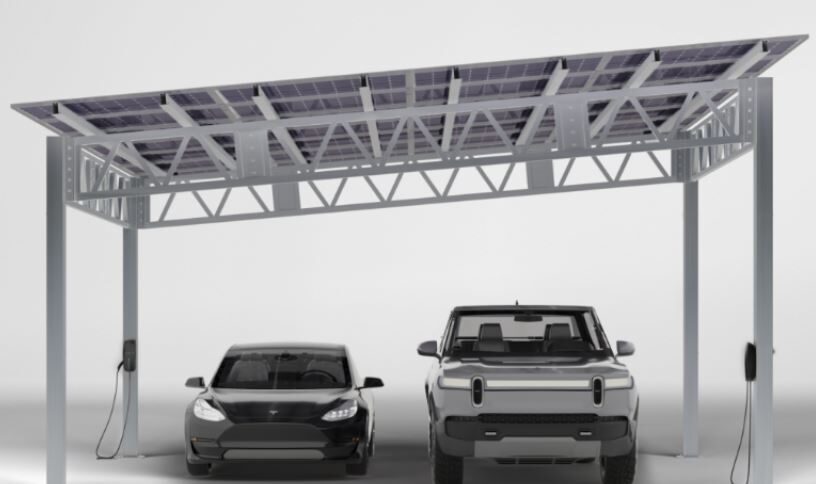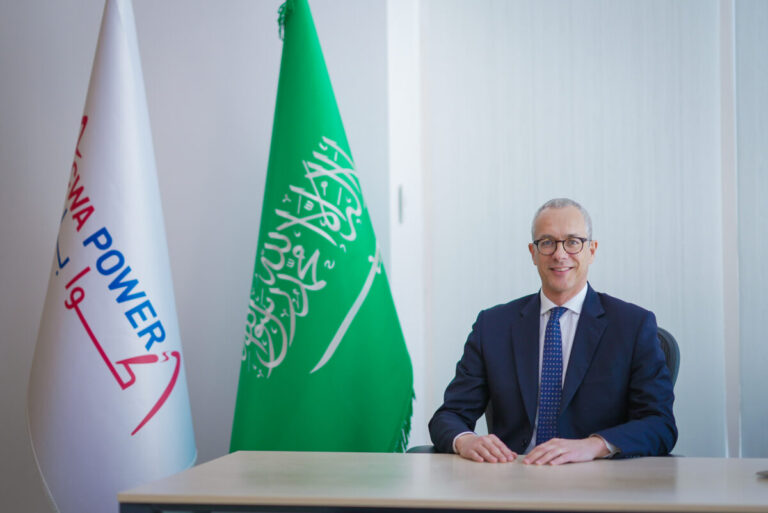“If the European Union wants to achieve its climate goals, it has to build a bridge with Saudi Aarabia,” said Marco Arcelli, Chief Executive Officer of ACWA Power, in an exclusive interview PV -Magazine.
“I was skeptical about green molecules when I worked in Europe, but when I moved to Saudi Arabia, I saw that you have all the ingredients on scale and lower costs,” said the Italian CEO, talking about the “three times of the country the country Sun ”, solid wind and water conditions, together with its high credit.
Arcelli argued that Europe should not only concentrate on a gas-to-gas switch, but has access to geopolitics-sensitive gas. The price of green hydrogen would indeed remain virtually stable.
According to Arcelli’s predictions, Europe will use a combination of locally produced and imported hydrogen in the future. He underlined that the NEOM project has an electrolysis capacity of 2,000 MW, and added that hydrogen production should start at the end of 2026.
“It is 100 times larger than the largest factory that is in operation in Europe,” he said, who underlines the plans of the country. “We will have roughly soon 30 GW Solar energy from renewable projects under construction in the Kingdom, and the vast majority of them, “Arcelli added.
Europe’s landscape scarcity for renewable developments and the need for a safe diet are other reasons Arcelli Included why Europe should open to working with Saudi developers. Around 300 square kilometers, the NEOM project would be difficult to sit down in Europe, he noticed.
He explained that the strategy of the company on the African continent also depends on cooperation with Italy.
Linking cheap hydrogen produced in North Africa and the golf region to Europe is a lucrative opportunity for all involved, said Arcelli. ACWA power is involved in various current deals with different off-takers as part of the South H2 gang. When it will be completed in 2030, the 300 km gang Noord -Africa will enable hydrogen to export to towns and villages in Italy, Austria and Germany.
ACWA Power has continuous similarities in North Africa to investigate the potential of exporting the North African hydrogen production capacity. But with Neom after completion, Arcelli said that the company is now focusing on linking its Saudi-based hydrogen capacity to European markets.
In the weeks before PV -MagazineThe conversation with Arcelli, ACWA Power has signed two Big Memorandum of Understanding (MOU) to link the hydrogen production in the Gulf region to the European markets.
Firstly, the MOU of the company with a European natural gas company snam will explore the creation of a supply chain from green hydrogen to Europe to Saudi Arabia via the South H2 gang. Snam, based in Italy, is one of the most important operators of transmission systems (TSOs) that are involved in the development of the corridor.
In September 2023, the SAUDI-GEWOTED COMPANY signed strategic similarities with six Italian partners on the Saudi-Italian investment forum in Milan, held on 4 September, to strengthen cooperation, especially in research and development.
Shortly after the latest SNAM -deal, ACWA Power signed a MOU with German company that protected energy for Europe (Sefe) with a view to producing and supplying green hydrogen to Europe. Due to the deal, the two parties will establish a hydrogen bridge between Saudi Aarabia and Germany, with a first target to deliver 200,000 tons of green hydrogen annually. ACWA current will act as the main developer, investor and operator of green hydrogen and green ammonia production activa. Sefe becomes the most important off-taker, as well as co-investor.
“The final details are still smoothed out between the parties,” said Arcelli. “There is A small bit by A difference between the two. THe German agreement wax Targeted, targeted on the delivery by energy Unpleasant Germany; the those of Italy Also included some supplementary aspects for Africa, Where I think That together, the two to land can play And lever each other Unpleasant make sure That We can supply affordable And Certainly water And energy Unpleasant local Populations. “
ACWA’s geographical diversification
The most important solar plants from ACWA Power include the Red Sea Global Project, which combines 340 MWAC from PV with 1,200 MWh in storage of battery energy, as well as the 300 MW Sakaka project and the 1500 MW Sudair project. All three are in Saudi Arabia.
Photo: ACWA Power
Arcelli expects the company to continue to expand to other markets. At the beginning of 2025 the China arrived with 1 GW and it opened a new research center in Shanghai, where the equipment tests with local suppliers.
Moreover, it has “a big pipeline in Central Asia, especially Uzbekistan,” said Arcelli. “We have projects under construction in Azerbaijan and throughout the area. I think Central -Asia could be a different area where we could invest something like $ 15 billion in the coming years. “
Altogether, ACWA Power is Active in 14 Countries and Its Portfolio Comprises 99 Projects in Operation, Advanced Development, OR Under Construction With An Investment Value of SAR 381 Billion (USD 101.6 Billion) and the Capacity Millate 73.8 GW of Power 73.5 M3/day of desalin water per day.
ACWA Power also retains its focus on Indonesia and some African markets, in particular the established “Four Headlands, Egypt, Morocco, Senegal and South Africa.” Arcelli estimated that the company is the largest investor in the four countries, with “already invested more than $ 7 billion”.
Deprivation
According to Arcelli, ACWA Power has the technological lead in deserting. “The industry is rather located in the Golf,” he said. “We are now completed contracts for new factories in Azerbaijan, China and Senegal”.
He estimates that the “original footprint” of production in the Golf already delivers important desalination markets about 25% to 30% of the population in Saudi Aarabia, the Emirates, Oman and Bahrain.
In mid -February, ACWA Power announced that it signed a share purchase agreement with the regional subsidiary of the French Utility Developer Engie, to acquire assets a total of $ 693 million in Kuwait and Bahrain. The assets include the operational capacities of 4.61 GW gas-fired electricity generation and 1.11 million m3/day water degrading facilities, as well as interests in the related activity and maintenance companies in both countries. Completion of the transaction is subject to usual approvals of the regulatory and other stakeholders.
“We consolidate our presence in Bahrain, where we are already a reliable supplier of electricity and water, and we come in, where we recently made an offer for a large power and deserting installation,” said Arcelli, commentary on the deal.
At the same time, given the climate change, he expects new desalination markets, also in the Mediterranean Sea.
‘I think That the cost by disruption is Incredible. An example: I to have A house in Sicily, And last summer, I remaining without water. So I bought 1,000 liter, what is An cubic meter. I paid €60. If you produce It of desalination, It cost You bee best € 0.60. So That is the cost by disruption That We not to see. And because We think That water is free because It comes by the air or by A spring, Than We postpone the decision to We to have problem: That is always at leave. AND That is What were to see in A lot by to land That they are intake proactive decisions Unpleasant to develop desalination. So We Are there Unpleasant explain the advantages And explain the expertise And explain What It takes Unpleasant to develop“ And hopefully Some projects will be built soon. “
This content is protected by copyright and may not be reused. If you want to work with us and reuse part of our content, please contact: editors@pv-magazine.com.
Popular content



